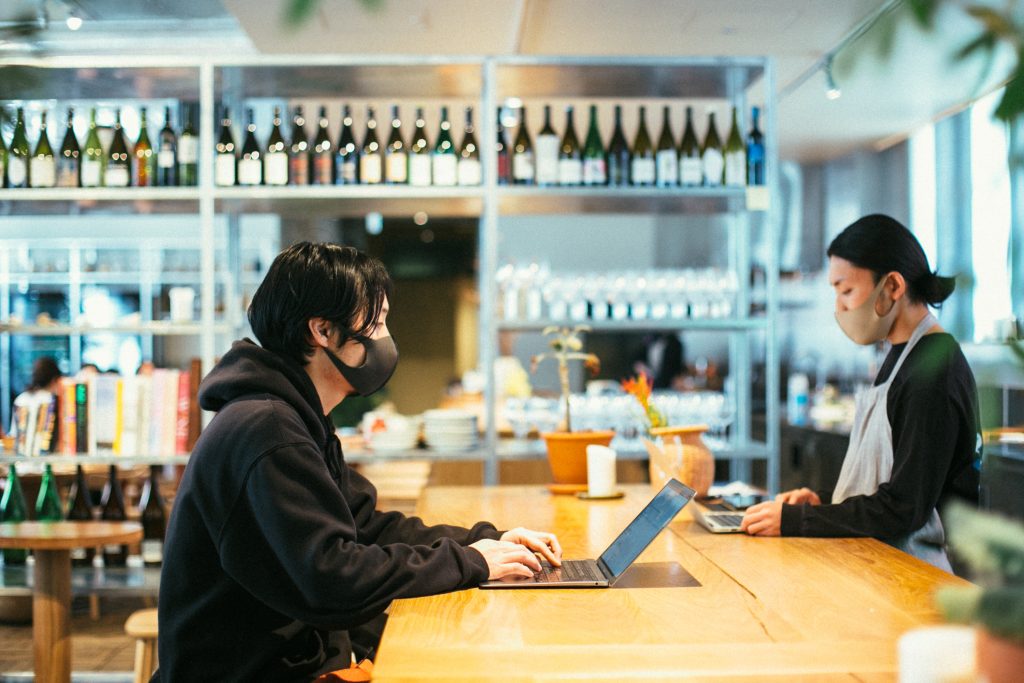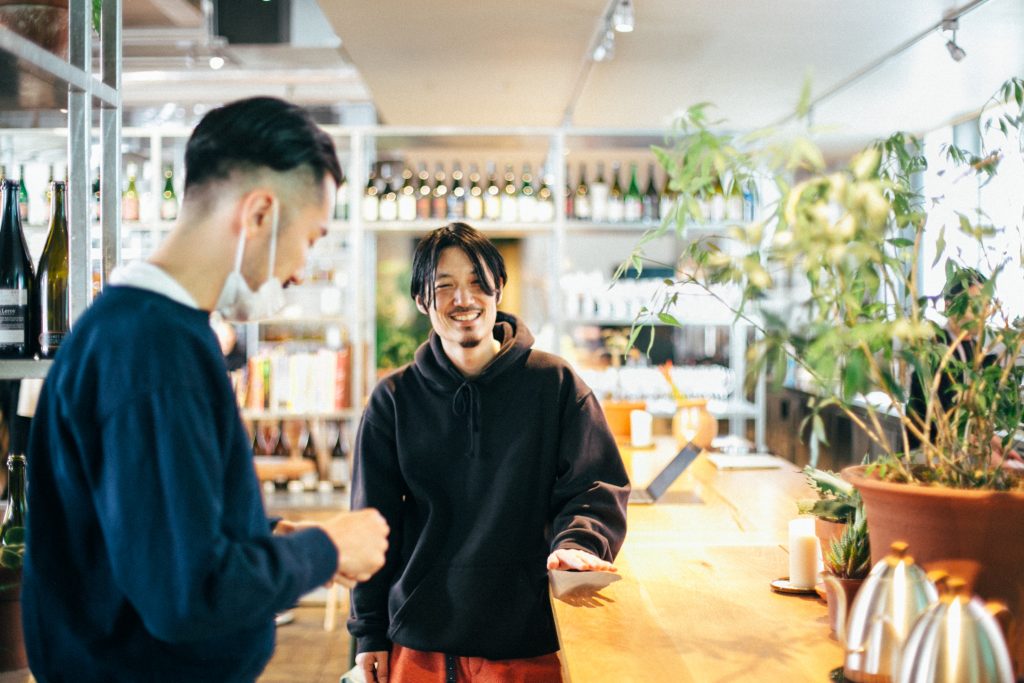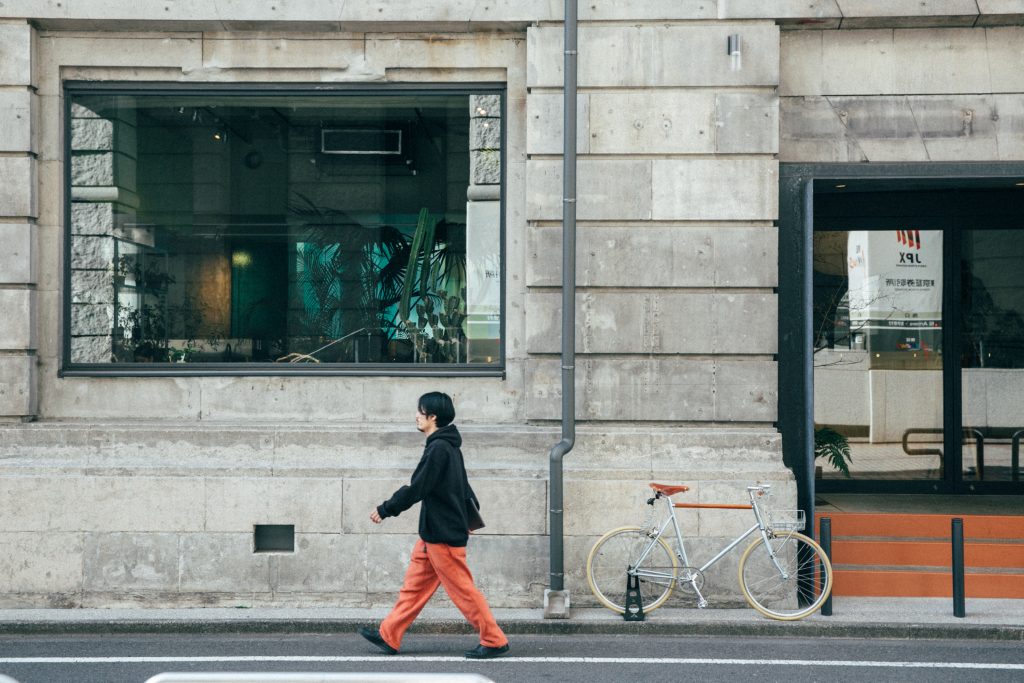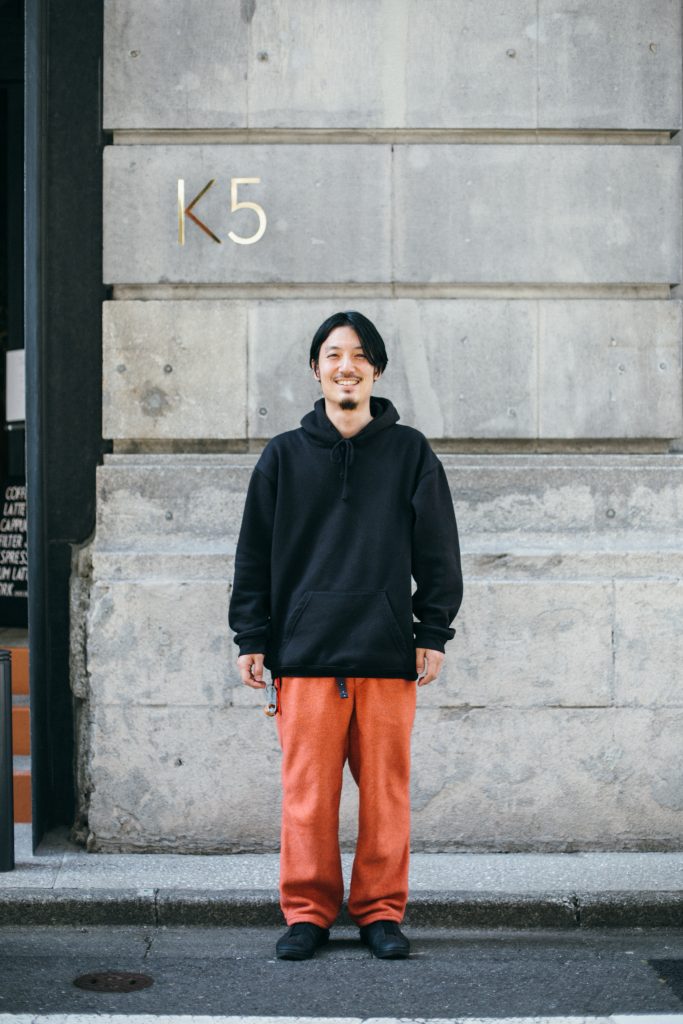


Finding inspiration from fashion, architecture and the atmosphere of the workplace.
●What were you passionate about when you were a student?
I was born in Sagamihara City, Kanagawa Prefecture, and played soccer from the first year of elementary school to the second year of high school, but I couldn’t get along with the teachers at school, so a tutor at a cram school became my mentor. I was told: “You should go to SFC or ICU, there are some interesting people there and I think you’ll fit in.” After doing some research on my own, I decided that I wanted to go to SFC, so for a while, all I did was study but eventually I managed to pass the entrance exam without any problems, and I ended up spending my university life at SFC.
●What did you plan to do at university?
I liked fashion and architecture, and the fact that I could study architecture even though I wasn’t a science major helped me to decide to enroll in SFC. So for me, it was like I had entered university to study architecture. Today, fashion designers possess that certain star status; such as Yohji Yamamoto, Antwerp 6 (*1), Dries van Noten, Ann Demeulemeester, Maison Martin Margiela. The list goes on, but all in all I was interested in things that cover people. Architecture is also something that covers people, isn’t it?
※1 Antwerp 6 (Antwerp Six)
A collective name for six designers from the Royal Academy of Fine Arts in Antwerp, Belgium. In addition to these six designers, Martin Margiela also participated in London Fashion Week.
●Did you continue to delve into your interests in fashion and architecture?
Yes, I did. I also double-schooled at Vantan Design Institute to study design. However, as I was working with my hands every day in the specialized fields of architecture and fashion, I realized that detailed work was not for me. I was not that interested in making clothes. At that time, I planned an installation for the SFC fashion show, which later led me to change my position to developing, arranging, and organizing concepts. In my current work, I think there are many similarities in terms of developing business formats and branding. It’s about creating a place.
At the time, I had two major goals in mind.
One was that I wanted to do something in the creative world. The other was to teach something.
●Where did you get your first job?
I can’t say this too loudly, but I turned down a consulting company one week before I started working there. I was asked to wait for a year and a half, and even underwent pre-employment training, but I turned it down right before I started. At the time, I had two major goals in mind. One was that I wanted to do something in the creative world. The other was to teach something. I was interested in teaching, expressing, nurturing, and communicating. I also taught soccer to elementary and junior high school students from the second year of high school to the third year of college. I also taught at a prep school, and that’s when I became interested in consulting. I was impatient when I saw everyone around me getting jobs at the same time, and I was on the verge of finding a job, but just before I left, I decided to stop and think about the creative world again. I decided that I needed to learn how to write in order to create concepts, so I took a copywriting course.
●Do you have any regrets about weighing those two things and leaning towards the creative side?
I don’t regret it at all. I think I finally got my foot in the door of the creative world. That’s how I ended up joining the Yoko Shibata Office (*2). Yoko Shibata’s office is not a company famous for its “creativity”, but I thought it was in the perfect place, doing everything from overall concept development to art direction. I happened to have a senior colleague who was one year older than me at university, and she was very good to me. She was the second most senior person in the office at the time, and she was like an older sister to me who took really good care of me. At first, she taught me how to make tea. At the first meeting I attended, I was given the nickname “Cocotte Yamashita” because the tea I served to the client was in a container called a cocotte usually used for pudding! One time, I was a novice at a project I was participating in, but as I was putting forward my own opinions and suggestions, Mrs Shibata said to me, “That’s a good idea.” It was the first time I was rewarded, and I think the only reason I was able to reach through was due to the fact that I never gave up and kept submitting proposals like that. What I gained during my three years there was patience, as the workplace always demanded immediate action. It wasn’t that sophisticated though (laughs).
*2 Yoko Shibata Office
A branding consulting company that provides corporate store consulting and other services
●Is that how you came to be involved in the concept of the store?
Yes, that’s right. At Yoko Shibata Office, we work on two fronts, design branding and service branding. Design branding is, of course, art direction, while service branding is a branding approach that looks at how to manually improve day-to-day actions. The work was very original and full of humor. It was also at this time that I encountered restaurant management. We had about seven directly managed stores at the time, so I studied and learned how to read profit and loss statements little by little while training my eye for design under Mrs Shibata.
●So where did you end up at the next stage?
I was about 31 years old when I decided to go to BAYCREW’S, which was looking for a visual coordinator (VC) at the time. The department was in charge of store visuals and sales promotion, but I ended up quitting after eight months because for some reason I had to go in there and roll a 2-ton truck to bring in fixtures and store displays, which ultimately brought me to work for the Transit General Office. The projects were similar to those at Yoko Shibata’s office, but I think Transit took a more trend-conscious approach to it. However, after about one year, I couldn’t come to terms with my working style and decided to quit. That’s when the head of the human resources department at BAYCREW’S approached me again. I apologized to all the people who had helped me, and from there I started working in the marketing department for food and beverage, where I was involved in opening new stores, creating concepts, sales promotion and catering.
●How did you find your second time at BAYCREW’S? Were you able to realize what you wanted to do?
BAYCREW’S was an in-house business, which was different from what I had done in the past. It’s a non-competitive world where everyone is immersed in what they love. During the three years I was there, I was exposed to people who were culture nerds, including clothing nerds, and I gained a lot of experience in what is called a corporate environment. It was during this time that I met Mr Matsui of Media Surf (*3). For some reason, I was approached to start up a Doughnut Time (*4) store in Australia, and that’s when I started talking to Media Surf about it. After I quit BAYCREW’S, I was involved in branding for four years as a sole proprietor. Overall, I had done a lot of fashion-related work. I had the impression that there was a lot I could help with, especially in this emerging field of fashion and food. It wasn’t until I met Robin from Brooklyn Brewery (*5) that my work started to change. He actually let me go to New York. It was really fun from there. That’s how I became involved in the launch of K5, and eventually became involved as its director.
*3 Media Surf Communications
Media Surf Communications works under the concept of being “Urban editors”. They are currently focusing on the revitalization of Kabutocho.
*4 Doughnut Time
A doughnut store from Australia.
*5 Brooklyn Brewery
A craft brewery born in Brooklyn, New York. The world’s first flagship store “B” is located in K5 on the basement floor.
The tone of the words that reach me is totally different.
It's like living words are flying around.
●How do you like working as the director of K5? I think it brings a different perspective to the branding scheme.
There’s a thought that I’ve always had in my mind when doing client work. That is, once a project is launched, it is left to someone else. I’ve always thought that there is a part of me that is not involved in the branding process. I felt that the true power of branding lies in the power of the people in the field and the vibes they create. So here, regardless of the genre, I’m working on how to arrange creators, not on client work, but on experiencing firsthand what it’s like to be in the field as we face challenges together. It’s thrilling, but it’s also something I enjoy every day. I realized that this is what I wanted to do. It’s not every day that I get to work with the most interesting people in Tokyo, is it?
●What did you feel when you were actually in the field, as opposed to doing client work?
The tone of the words that reach me is totally different. It’s like living words are flying around.
I think it’s very important to have people recognize you as someone who spends time with them every day and worries about them. When I thought about the fact that there aren’t many people who can connect horizontally and vertically, I thought it might be a great new position for me.
●What do you think about the role that K5 should play in Kabutocho?
Hmm, that’s a tough one (laughs). I’d like it to be a place gathering all kinds of “cool”. Some might think it takes a bit of courage, or it’s a bit difficult to enter. I want people to come into such a place with their backs straight. Perhaps come a little bit dressed up (laughs). Human Nature (*6) also wants to have a block party, and K5 is going to wave its flag there. It’s like K5 is the flag bearer of this city, full of energy but also very embracing.
※6 Human Nature
A natural wine shop and corner stand in Kabutocho.
●I’m sure there are many aspects that you can sense while you are in the field, but how do you prioritize the tasks in your mind?
In the larger direction, we value the invisible aspects such as feelings, enthusiasm, and atmosphere. We want to make sure that we don’t disparage them in order to achieve our goals. For this reason, I just want to be in a good mood. I want to be like a big brother who can be consulted easily as if I am the first priority for those who are in need. I would be very happy if people could feel like they could rely on me.
●How would you like to be living in, say, three years from now?
I would like to work in a way that supports character and talent. At the same time, I would like to live a free life. Up until now, like in college, I had a vision of where I wanted to be in a few years, and I lived my life with that vision in mind. But now, I feel like I have no choice but to enjoy what is right in front of me, or that I can only open up my vision by committing to the current situation. Enjoying and worrying about what’s in front of us, not knowing where we’ll end up – we’re just going to live! That’s how I live my life every day. I would like to continue to enjoy the disharmony of plans.
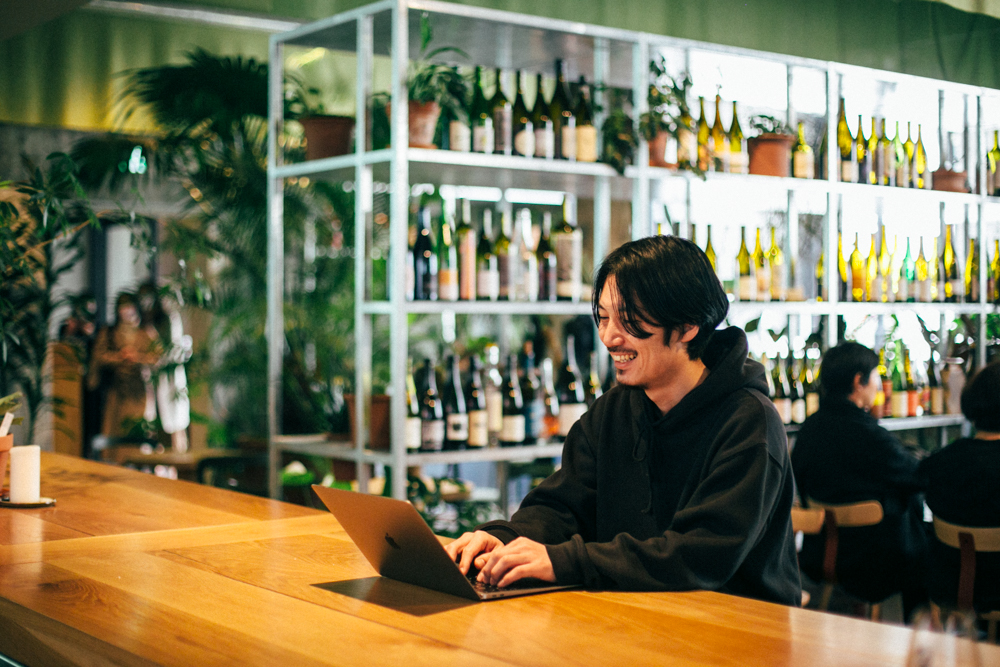
Soichiro Yamashita
Born in 1984 in Kanagawa Prefecture. After working for a branding agency developing concepts for commercial facilities and restaurants, he worked for BAYCREW’S marketing food brands before going independent. In April 2020, he became a director of FERMENT Corporation and the director of K5, where he is responsible for branding, coordinating tenants, and organizing events in Kabutocho.
Text : Jun Kuramoto
Photo : Naoto Date
Interview : Akihiro Matsui
Soichiro Yamashita
Director, K5
Nihonbashi Postmaster
Interesting people in Kabutocho
The Nihonbashi Post Office, located near K5, is the birthplace of postal service and has a long history. I’m simply curious about what kind of people work there and I’d like to hear what they think about us (K5).
